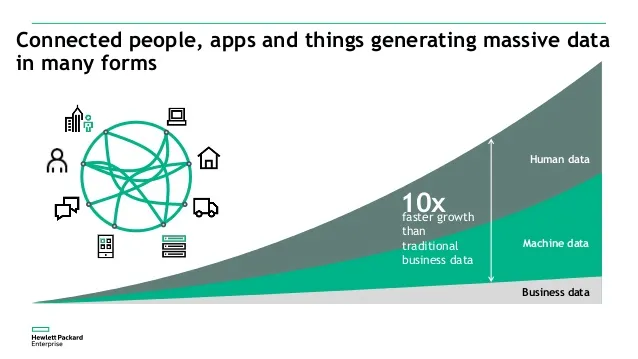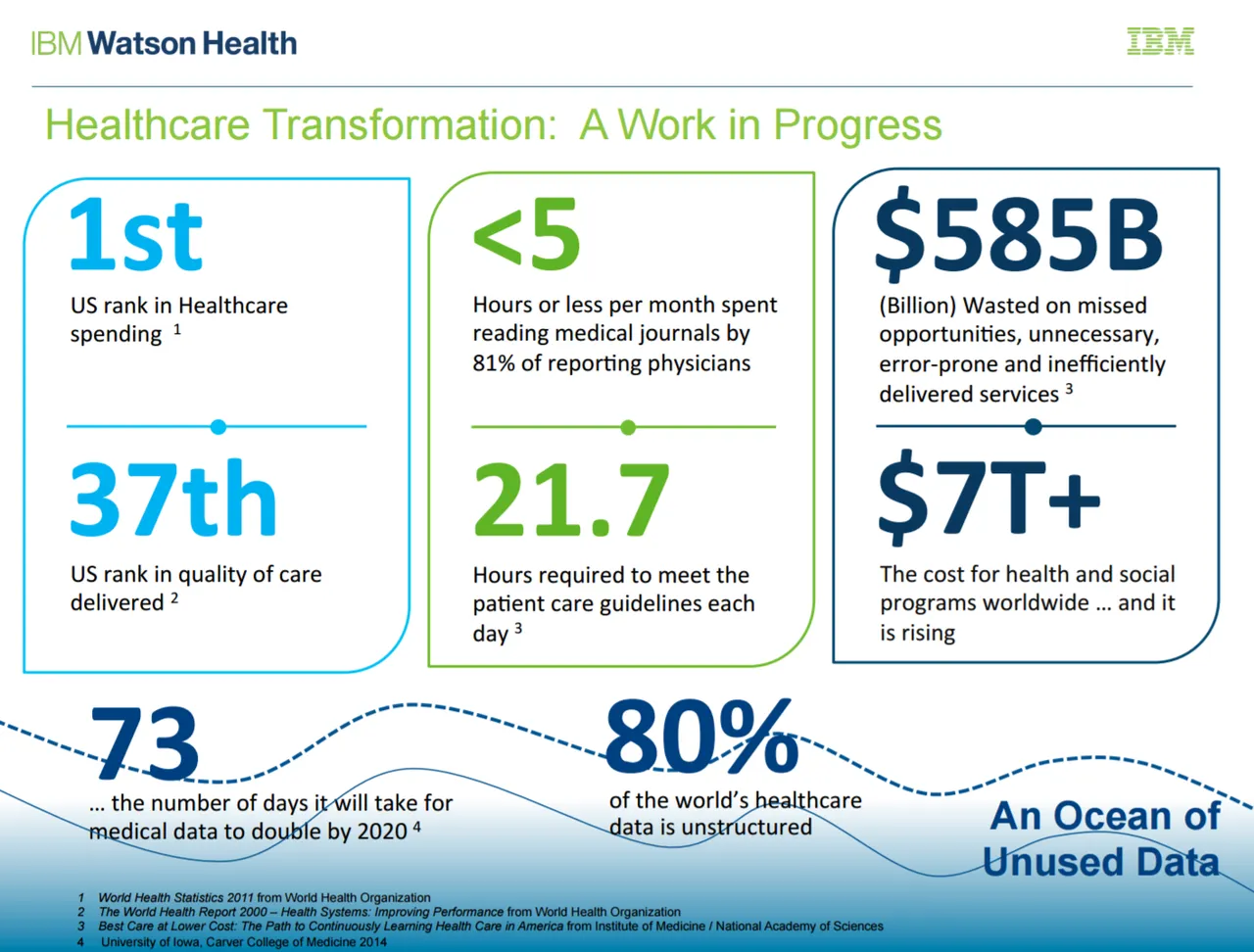
I suppose the easiest place in this mine field of healthcare informatics, how the blockchain, big data and quantified self all meld together is before people can access healthcare, they need to have some form of medical insurance to access the healthcare system.
The growth seen in medical data (by some estimates 48% each year), computing power and technical ability are enabling the medical field to reinvent itself in ways never before thought possible. Medicine has made tremendous strides over the past century, but with the influx of big data, some observers believe the field of medicine is prepared to push the boundries even further to improve health care faster.

IBM have clearly described the fact that as of yet as far as healthcare associated data is concerned there are massive gaps in capacity and utilisation of data and a whopping 80% of all worlds healthcare data is actually unstructured.

With the cost of care on the rise, the industry is experiencing a shift towards preventive and value-based care. At the same time, technologies like wearable devices, at-home testing services, and telemedicine are empowering patients to be more engaged with and proactive about their own health. Meanwhile, the industry is grappling with the tension between encouraging data sharing to maximize the benefits of data and maintaining patient privacy and trust. All of these developments are altering the role of physicians and their relation- ships with patients.
Behind these trends is one fundamental force driving health care transformation: the power of data.
Data is permeating into every component of the health care ecosystem:
• Medical Research: Access to new,diverse data and open datasets are fueling drug discovery and making clinical trials and research more efficient.
• Daily life: Wearable devices, online diagnostic tools, and genetic sequencing services hold the promise of better informed and engaged patients.
• The patient experience: Health systems are investing heavily in technology, including machine learning, which is proving as effective as, or more effective than human diagnosticians.
• Ongoing care: Telemedicine and health apps make it possible for physicians
to see patients virtually, outside of traditional facilities for increased access and tailored care.
• Prediction and prevention: Health data is allowing doctors to build better patient profiles and predictive models to more effectively anticipate, diagnose and treat disease.
So with all these possible streams of data how can this actually benefit the data afterall despite there being many companies that actually mine this data, this doesnt not actually benefit the patient as such and here is where my first find steps in CoverUS.

CoverUS, a New York City-based startup expected to launch in early 2018, who wants to help patients monetize their medical data through a blockchain-based marketplace, .
Here are some things to know about the startup's mission.
Patients who sign up for CoverUS download a digital wallet to their phone to house medical data, which may include information from EMRs, wearables or health trackers. A patient is also able to answer questions about their health and lifestyle habits through online surveys.
Once a patient populates the digital wallet with medical data, they have the opportunity to share the information with various companies on the marketplace. The patient is paid in a cryptocurrency called CoverCoin, which they can spend on select services like gym memberships or insurance plan savings.
To earn CoverCoins, CoverUS determines the amount consumers earn for each transaction and funds its crypto currency with money paid by third parties to access a consumer’s information. Consumers will be able to spend their CoverCoins on health-related products such as prescription drugs, co-pays and other services related to social determinants of healthcare, such as rides to the doctor.
Sealey co-founder of CoverUs, estimates the number of CoverCoins a consumer can earn per month, on average, will range from 100 and 1,000, depending on activity. Each CoverCoin is the equivalent to $1.
A consumer with diabetes, for example, may receive an offer from a medical research firm conducting a study on diabetes patients to release his medical records in return for earning 50 CoverCoins. Other ways to earn CoverCoins include agreeing to participate in a survey sponsored by a pharmaceutical company or a drug trial.
Consumers downloading the CoverUS app, which is scheduled to launch during the second quarter of this year, can set permissions within the app to allow third parties access to their electronic medical records. In addition, consumers can enrich their health profile with information downloaded from wearable devices and other consumer-facing health apps.
"We want to incentivize people to use the [reward] in service of their health," Andrew Hoppin, co-founder of CoverUS, emphasized in an interview recently.
Christopher Sealey, said the startup's goal is to give patients autonomy over their medical data, while also providing drug companies — which often purchase patient data from third-party sources like insurers — with a more holistic picture of patient health.
"From a moral standpoint, we think people should own their healthcare data," he said. "Secondly, we believe that healthcare data is most valuable when it's in an individual's hands because your EMRs and prescriptions only paint part of the picture. Nobody knows better than you how you are doing."
The startup Luna DNA also aims to launch a project during the first quarter of 2018 that uses cryptocurrency to encourage patients to share health data with researchers. The service is targeted toward patients looking to share DNA results from at-home testing kits.
Under CoverUS’s model, third-parties looking to access information within the CoverUS database must request a key from the company. The key allows third-parties to anonymously identify groups fitting a specific demographic profile, such as people aged 40 to 55 with heart conditions. After identifying a group, an offer can be created to incent consumers within the group to share their data. Because consumers directly control access to their data, they can choose when to release it based on the offers received.
Health Wizz, another startup, plans to release a blockchain-based mobile platform for medical data in March. Through the platform, Health Wizz will offer patients a single record of their medical data, which pharmaceutical companies, health payers and researchers can purchase access to with cryptocurrency.
Disclosure:I have no conflicts of interests, and I have no association with any of these companies.
My review of the services is based solely on information freely available. I neither endorse, or advise anyone to use their services without their own due diligence and research on the companies mentioned in this blog. Anyone who does act engage with anyone mentioned in these blogs does so at their own risk.